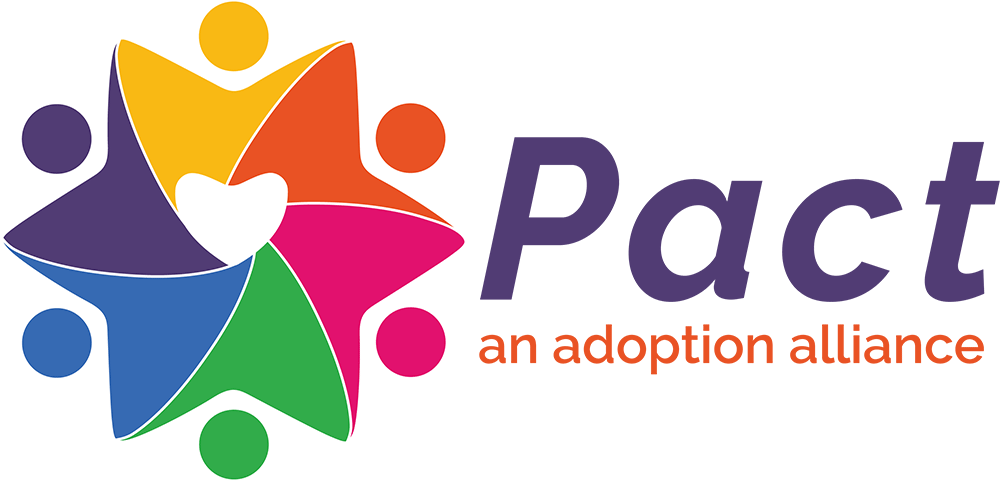2019
Adoptive parents of color are often told that just being the same race as their child is enough. As adoptive parents ourselves, we know that it takes more than love and racial matching to support our children. We believe that by creating a foundation of trust, honesty and openness, we can better honor all of who our children are.
Are you a person of color preparing to adopt, or who has recently adopted a child? Trying to sort out how parenting an adopted child is the same as or different from parenting a child born to you? Imagine you have entered a room full of parents of color who are all at various stages of the lifelong journey of adoption. Some hold the infants they recently adopted; others have older children who are playing together in the next room. As you sit together in circle, each member of your new-found community leans forward to offer you a few words of advice as you set out on your own adoption journey. Here are some thoughts that members of the Adoptive Parents of Color Collaborative want to share with you:
Educate yourself about the complexity of adoption
Listen to the experiences and expertise of adult adoptees to gain more knowledge and perspective.
Listen to the experiences and expertise of first parents to gain more knowledge and perspective.
Talk to family members before becoming parents to make sure everyone is on the same page, using correct language as well as refraining from making negative comments about the child’s birth family or talking about how “lucky” the child is, etc.
Understand and discuss with your child the institutional and structural nature of adoption—through economic, political, racial, gender and historical lenses, among others. It can be meaningful to acknowledge those realities to our children.
Recognize the importance of origins
Ensure that the adoption story doesn’t get lost. Have a clear and intentional way to talk about adoption. The world will not push you in this direction; people may not encourage you to talk, you will have to find your way.
Be willing to have your child connected to their birth family whenever possible. And if no contact is possible, then gather as much information as you can about the birth family to be able to talk about them with your child.
We must model for our child what it means to have strong connections to family by birth and choice. This gives them permission to define family for themselves.
Understand how your child’s cultural identity will be supported. As adoptive parents of color, we often share the same racial identity as our children, but that does not mean we have the same cultural histories. Ensure that your child has opportunities to access as much of the specifics as possible of their family of origin’s cultural and racial identity.
Pay attention to socioeconomic differences between your child’s adoptive family and first family. Be open and welcoming to your child’s first family, regardless of these differences.
Acknowledge the role of trauma and loss
Understand the loss and separation of adoption as trauma.
Adoption is a trauma and it impacts our kids. While there is more to the story of adoption than loss, it is a part of our children’s journey. Loss of family, loss of community (even in same-race adoption), loss of identity—these are all significant and are all important pieces of who our children are.
Adoptive parents can support their children to heal this trauma but not “overcome” it.
Infant placement doesn’t mean our kids haven’t experienced loss.
Looking alike doesn’t make it all okay.
We have to understand that children’s behavior is an attempt to communicate thoughts/feelings/experiences they don’t have language for, are overwhelmed by, or are afraid to put words to.
Find community
It is important that we are in community with other adoptive families who are finding ways to support their children in navigating this part of the story.
Having a community of other children of color who are adopted helps. Have a game plan for building your community. Consider how you will connect with other families headed by people of color who have adopted. Although people of color make up the majority (per capita) of adoptive/foster/kinship placements, there is a severe lack of services offered to meet the specific needs of these families. It may not always be easy to build a community that looks like your family. If there are no services already being provided in your area, consider starting a group. Having community is crucial!
Take care of yourself and your family
Be open to being stretched. Parenting provides you an opportunity to learn new skills. Be open to who your child is and be pliable enough to shift to what is needed in the moment.
We have a responsibility to show our kids what it means to be proud of who we are. Be diligent about self-care, and strong in our values about respect for all of the members of our community.
Our children are to be celebrated. Adoption is loss but it is also joy. Adoptive families must find the opportunities to balance the loss and the joy of adoption. Make lots of time for joy, celebration and play.
